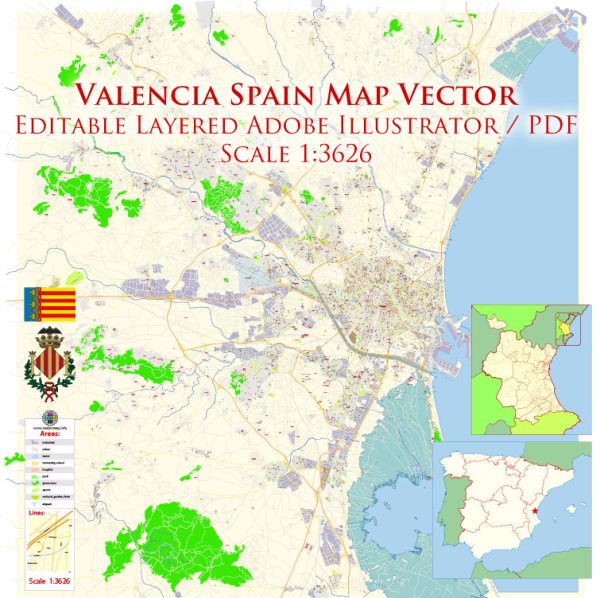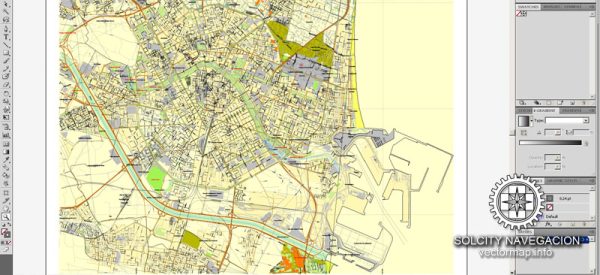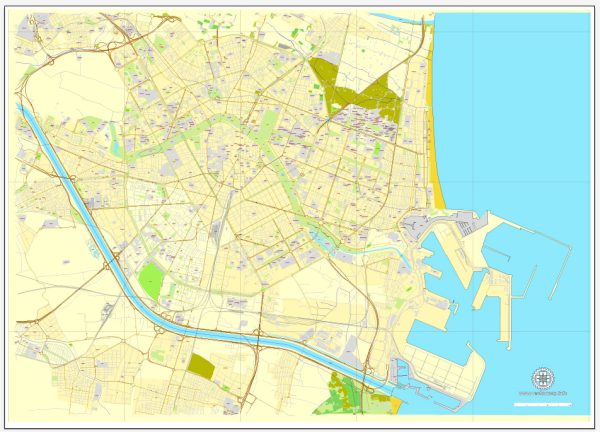Valencia, Spain, is known for its stunning architecture, combining historical landmarks with modern designs. Some of the most famous buildings and architectural attractions in Valencia include:
- City of Arts and Sciences (Ciudad de las Artes y las Ciencias): This futuristic complex is an iconic symbol of Valencia. Designed by Santiago Calatrava and Félix Candela, it includes several remarkable buildings such as:
- L’Hemisfèric: An eye-catching IMAX cinema and planetarium.
- Palau de les Arts Reina Sofia: A world-class opera and performing arts center.
- L’Oceanografic: The largest aquarium in Europe.
- Museu de les Ciències Príncipe Felipe: A science museum with interactive exhibits.
- L’Àgora: A versatile event space.
- Valencia Cathedral (Catedral de Valencia): This historic cathedral is a masterpiece of Gothic and Romanesque architecture. Its notable feature is the Holy Grail, believed to be the chalice used by Jesus at the Last Supper.
- Lonja de la Seda (Silk Exchange): A UNESCO World Heritage site, this late Gothic building is a masterpiece of civil Gothic architecture. It was used for trading silk in the 15th century and is known for its stunning columns and intricate details.
- Central Market of Valencia (Mercado Central): This is one of the largest and oldest indoor markets in Europe. The building is a beautiful example of Valencian Art Nouveau architecture and offers a wide variety of fresh produce, meats, seafood, and local delicacies.
- Torres de Serranos (Serranos Towers): These historic Gothic-style towers were once part of the city’s medieval city wall. They offer a fantastic panoramic view of the city.
- Valencia Bullring (Plaza de Toros de Valencia): A striking example of neo-Mudejar architecture, it is one of the oldest and most famous bullrings in Spain. Even if you’re not interested in bullfighting, the building itself is worth a visit.
- Colón Market (Mercado de Colón): This modernist building, designed by Francisco Mora, is not only a market but also a cultural and dining space. Its architecture is a blend of modernism and Valencian regionalist styles.
- Palacio del Marqués de Dos Aguas: This rococo-style palace is home to the National Ceramics Museum, showcasing a vast collection of ceramics, porcelain, and other decorative arts.
- Valencian Institute of Modern Art (Institut Valencià d’Art Modern – IVAM): The building itself, designed by architect Emilio Giménez, is an architectural gem. It’s a hub for contemporary and modern art in Valencia.
- Mercado de Tapinería: A contemporary architectural space with a mix of old and new. It’s home to various shops, art galleries, and eateries.
These are just a few of the architectural wonders that make Valencia a visually captivating and culturally rich city. Exploring these landmarks will give you a deeper appreciation of the city’s history and culture.




 Author: Kirill Shrayber, Ph.D.
Author: Kirill Shrayber, Ph.D.